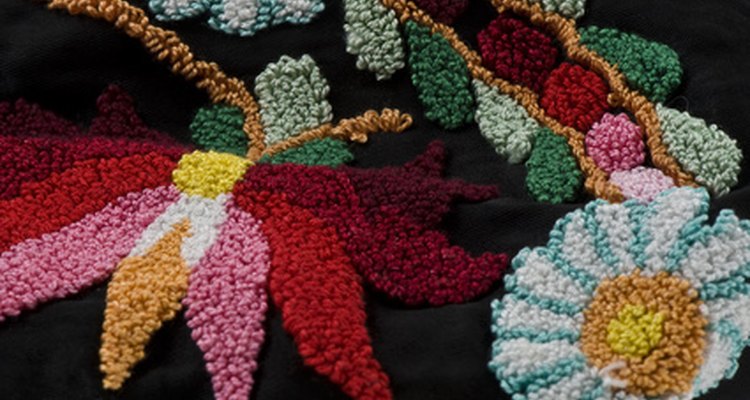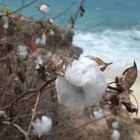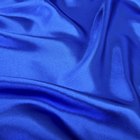
Fabric identification is critical for proper fabric use, care, maintenance and stain removal, but it is not always possible to know one fabric from another by texture, thickness or appearance. Fabrics vary greatly, even when made of the same fiber. For example, cotton fabric products range from heavy canvas sailcloth to thin organdy and velveteen’s short pile. Fabric identification can be further muddied by the abundance of blended fabrics.
Look for the fiber content on the label. This tag offers information on the material used, including the percentage by weight of fibers included. Check for any special marks or seals, as these may also identify certain fibers, such as wool or cotton. Care labels provide use and care instructions and may hint at a fabric’s fiber content if that information is missing.
Check for signs of damage by carpet beetles or clothes moths, as these pests feed on wool or silk. Webs and shed skins of the larvae are among the signs of infestation. Termites may feed on acetate fabrics, as they are made from cellulose or wood fiber.
Compare the absorbency and drying time of the fabrics. For example, cotton is absorbent but slow to dry, whereas silk is highly absorbent and dries fairly quickly.
Perform a chemical test. Fiber-Etch dissolves plant fibers such as cotton, while acetate dissolves in acetone.
Conduct a burn test. The plant fibers of cotton burn steadily or char, creating a soft, crumbly black or gray ash and the aroma of burning paper. The protein fibers of wool are flame-resistant. They burn briefly and char, exhibiting the aroma of burning hair and producing an irregular dark ash. Synthetic acetate both burns and melts; acetate drips with a flame that can be hard to put out. Acetate produces a vinegar or burning wood odor and a hard, black, irregular ash. The protein fibers of silk burn easily, but burn only briefly and char. Silk fibers produce an odor of burning hair and melt with the appearance of a soft black bead. If the material is weighted silk, burning produces a lacey ash. Man-made polyester burns briefly and melts with a chemical aroma, creating a hard, round melt like a black bead instead of ash. The polymer -- created from petroleum, coal, air and water -- melts and burns concurrently and makes a black smoke.
Related Articles

What Is Arnel Vintage Material Fabric?

What Is the Difference Between Acrylic ...

How Is Poly Cotton Made?

Cashmere Vs. Viscose

How to Tell If a Fabric Is Cotton

Which Fabrics Are Most Fire Resistant?

How to Treat Anemia in Sheep

Chi Silk Infusion Ingredients

The Disadvantages of Polyester Cotton

1,000 Denier Cordura Specifications

Microfiber vs. Cotton Clothes

How to Remove Wrinkles From Polyester ...

Can You Iron Acetate Fabric?

How to Restore Black Suede

What Is Cotton Plisse?

How to Tell the Difference Between Silk ...

What Is a Pink Amethyst?

What Is a Synthetic Polyester Fabric?

Brazilian Pepper Wood for Cooking

Can You Hand Wash Silk That Says Dry ...